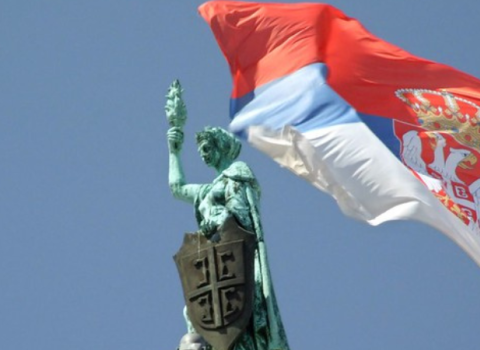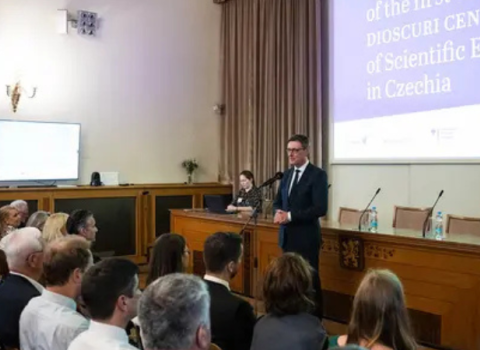As a technical university, NTNU has extensive experience in the creation of innovation, entrepreneurship and transfer of new knowledge and technology to industries. Based on this experience, as well as on our experience in using the innovation related instruments and initiatives associated with the EU’s different Framework Programmes, we would like to share some comments and ideas about the European Innovation Council (EIC).
Inspired by the success of the European Research Council (ERC), the EIC has the opportunity represent the ERC’s counterpart, by focusing on to higher technology readiness level (TRL) based initiatives.
However, the creation of two extreme strong “political” poles such as ERC and the proposed EIC could lead to an unbalanced distribution in future Framework Programmes in funding devoted to R&I, which would weaken support for intermediate TRLs.
NTNU recommends that attention be paid to maintaining balanced financial support for all TRL levels.In this regard, it is important to consider the two different paths to bringing innovation to the marketplace:
- Business model innovation, represented by “short-term game changers” (such as Google, Facebook and Uber). This type of innovation is usually based on the engineering of existing mature technologies and normally can be implemented over a short to medium time frame. Any related development activities usually have TRLs of 7 to 8.
- Product/process innovation, represented by the world of “mid- to long-term game changers” (and applies mostly to the manufacturing industry). Any related development activities normally have a longer period and rely on intermediate steps (i.e. with TRLs from 4 to 6) before being able to produce results that can change markets.
But the EIC should only not be limited to a “one-stop shop”, where it will be possible to surf and access in a simplified and clear way every available opportunity and instruments. The future EIC should be similar to the ERC in that it should be based on excellence as its driving concept, and should take full governance in initiatives and funding actions related to innovation. This would provide the basis for the deployment of an advanced innovation ecosystem (AIES) to foster accelerated new business ideas that would be able to grow rapidly based on university and/or RTO research results.
Typically, ideas from universities have long lead times before they are adopted and implemented by businesses; at the same time these ideas often need a considerable amount of venture capital and time to grow to achieve substantial market penetration.
NTNU’s experience has matured in growing businesses from research to profitable industries in the area of hydropower (over more than a century), light metals (over more than 50 years for aluminium, and subsequently silicon for solar power), the oil and gas industry (in excess of 40 years) and now in the ocean industry (fisheries, aquaculture and offshore wind). Our experience has demonstrated that the core basis for success depends on the ability to create an ecosystem of innovation, possibly specialized based on themes.
This ecosystem must include basic research as well as the ability to translate research findings into innovations, together with the ability to “mentor”, spin-off or incubate new companies or support existing companies to innovate. In this case, the entire value chain must contain appropriate support mechanisms to fulfill the overall goal of increasing the number of companies able to grow into profitable businesses.
In view of these considerations while defining the set of activities that the future EIC should/could manage, the EC should:
1. Keep it as simple as possible while exploiting the opportunity to rationalize the overall EU innovation framework.
2. Consider the opportunity to effectively structure and reinforce the European family of innovation centres (mostly from universities and RTOs but also represented by regional incubation centres and other similar structures) with the aim of creating sector-specialized Advanced Innovation Ecosystems of European Dimensions.
Inspiration could be taken from the ESFRI approach by creating a similar forum for “Innovation Hubs” (ESFIH - European Strategic Forum of Innovation Hubs) represented by distributed networks of national centres that are either thematically clustered (with their activities targeted to specialized industrial areas) or by single nodes with their unique specialization the European Dimension and interests. As soon as these are defined and implemented, they will represent clear reference points of a highly specialized nature where new entrepreneurs or existing industries will be able to find the right support in terms of incubation spaces, mentoring, and financing for growth.
The European Dimension of such centres will allow the internal exchange of best practices and approaches to innovation, which would possibly improve the effectiveness of local approaches in speeding up and maximizing innovation pathways for future beneficiaries. Moreover, their multi country nature should also guarantee the possibility that EIC-developed solutions/companies have access to EU countries that are different from the country of their identified host institution.
Even if this approach ends up being similar to what has been adopted in some of the EIT’s existing KICs, it is distinguished by its potentially wider geographical coverage, which is typical of a network of centres, as well as by its greater flexibility in adding centres even after its establishment.
3. Consider the creation of the principal entrepreneur/principal company figure. Again, similar to the ERC approach, applicants to EIC calls could be identified as principal entrepreneurs or principal companies, identifying themselves as host or referential institutions for the creation of innovation at one of these hubs. At the same time, proposals could benefit from the scientific and innovation expertise needed to deploy/develop new companies/products as well as from the specialized know-how and services available. This is a necessary instrument to attain the best possible market deployment and economic impact for the benefit of Europe.
4. Consider the need to guarantee appropriate training and education for entrepreneurship. The European entrepreneurship culture needs to be systematized. Specific actions that complement those outlined in the previous points should be implemented to help structure the European system of entrepreneurship schools and university courses. The ultimate objective should be to influence a cultural change, with the goal of increasing the number of potential European “champions” over time who will be able to become the entrepreneurs of the future.
5. Consider new ways of addressing EIC-related communication and how best to replicate it at the European level.The EIC will likely become a recognized brand with many success stories across in technological areas or industrial sectors. A critical mass of positive results clustered in different ways would represent an enormous opportunity to make an effective impact if well exploited in terms of targeted communication.
While the normal practice is to leave the sharing of results to individual projects, the EIC should consider exploiting its portfolio of successful cases in a more structured way. In line with the nature of the EIC, actions to establish European-wide dissemination actions based on innovative methodologies should be launched in order to stimulate the so-called “replication effect”. The EIC could realize this itself or issue specific calls for proposals to evaluate the innovation behind the applicant’s proposed approach to communication.
6. Consider creating instruments/actions to support penetration of extra-EU markets for the most promising EU companies/technologies developed inside the EIC. The penetration of EU companies/technologies into extra-EU markets can also represent an added value for Europe. The creation of tools in the framework of the EIC to support follow up actions to facilitate the entrance of the best companies/products into extra-EU markets can also represent a reinforcing tool for improving EU competitiveness. Clearly, compliance with different state competition regulations will need to be taken into proper account.
7. Define ways to have a regulatory framework that can quickly adapt to the emergence of new technologies so as not to delay their entrance to the market. In many cases, existing regulations need to be changed before new products are allowed to enter the market. Measures for that would allow for the rapid change of existing regulations need to be identified in order to reduce economic losses and reduce the time to commercialization. This set of ideas is intended as a constructive contribution to what we see as potential “ingredients” that could help define the future EIC’s activities and its form.
It is clear that there will always be the need to properly govern the complementarities found in innovation-related initiatives (like those managed inside the EIT’s KICs or the Enterprise Europe Network) or networks (such as TAFTIE and the TTO Circle).
In NTNU’s opinion, the EIC represents a very powerful opportunity for the EC to reorder and rationalize the EU innovation scenario and to revitalize cross-referential dialogue and collaboration among many of its current actors.
Click here to read the full paper. For questions and more information, please contact:
Johan Einar Hustad – NTNU Vice Rector for Innovation – [email protected]
Massimo Busuoli – Head of NTNU Brussels office – [email protected]




 A unique international forum for public research organisations and companies to connect their external engagement with strategic interests around their R&D system.
A unique international forum for public research organisations and companies to connect their external engagement with strategic interests around their R&D system.